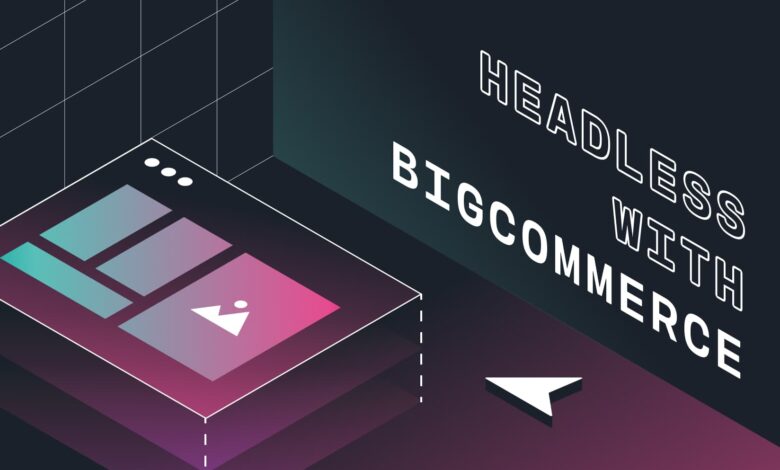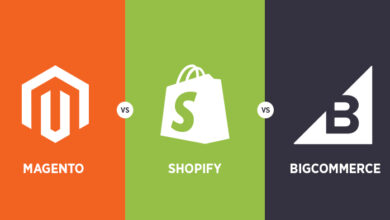Navigating the Challenges of BigCommerce Headless Commerce

Introduction
The e-commerce landscape is rapidly evolving, with headless commerce emerging as a key trend. BigCommerce, a leading e-commerce platform, is at the forefront of this revolution, offering robust support for headless commerce. This blog aims to address the challenges and misconceptions associated with headless commerce, guiding BigCommerce users through effective implementation strategies.
Read Also: BigCommerce Headless: Exploring Why It’s Required for eCommerce Businesses
Understanding Headless Commerce
Headless commerce refers to the decoupling of the front-end presentation layer of a website from the back-end e-commerce functionality. This separation allows for greater flexibility and customization in how content is delivered to users. In today’s digital marketplace, the significance of headless commerce lies in its ability to provide tailored shopping experiences across various digital touchpoints. For BigCommerce users, adopting a headless approach means enhanced scalability, improved performance, and the ability to innovate quickly.
Common Misconceptions about Headless Commerce
Headless commerce, despite its growing popularity, is often shrouded in misconceptions that can mislead businesses about its applicability and functionality. One prevalent misconception is that headless commerce is overly complex and not suitable for small businesses. However, this view oversimplifies the versatility of headless commerce. In reality, while headless commerce does introduce a different architectural approach to e-commerce, it is not inherently too complex for small businesses. With the right strategy and tools, even small enterprises can harness the flexibility and customization benefits of headless commerce, scaling their online presence to match their growth and evolving customer demands.
Another common misunderstanding is the belief that headless commerce completely negates the need for traditional e-commerce platforms. This assumption overlooks the fact that headless commerce is not a standalone solution but rather an approach to building e-commerce experiences. While it separates the front-end presentation layer from the back-end e-commerce operations, it still relies on a robust back-end platform to manage critical functions like processing orders, managing inventory, and handling payments. Platforms like BigCommerce play an integral role in this architecture, providing the necessary back-end infrastructure to support the headless front end. They offer APIs and tools that allow businesses to create bespoke front-end experiences while maintaining the stability and reliability of a proven e-commerce platform.
Challenges in Implementing Headless Commerce on BigCommerce
Implementing headless commerce comes with its challenges. These include technical complexities, the need for additional resources, integration hurdles with existing systems, and maintaining a consistent customer experience across all channels.
Strategies for Overcoming Technical Complexities
To manage these complexities, it’s essential to adopt best practices such as:
– Choosing the right tools and technologies that align with your business goals.
– Ensuring your team has the necessary skills, or considering hiring specialists for technical execution.
– Keeping scalability and future growth in mind during the development process.
Integration Strategies for a Smooth Headless Transition
A smooth transition to headless commerce involves:
– Careful planning for integrating with existing systems and third-party services.
– Ensuring data consistency and real-time synchronization between systems.
– Implementing solutions that maintain functionality and user experience across all touchpoints.
Maintaining Optimal Customer Experience
The key to a successful headless implementation is maintaining a seamless and cohesive user experience. This involves delivering personalized and context-aware content and utilizing analytics and customer feedback to continuously refine the user journey.
Preparing for the Future with Headless Commerce
Looking ahead, headless commerce is set to become even more integral in the e-commerce space. BigCommerce users can stay ahead by embracing these changes and preparing for future developments, such as the integration of emerging technologies like AI and IoT.
Conclusion
Navigating the challenges of BigCommerce headless requires understanding its implications, debunking myths, and adopting the right strategies for technical implementation and customer experience management. With the right approach, BigCommerce users can successfully transition to a headless model, reaping the long-term benefits.
We encourage readers to delve deeper into the world of headless commerce on BigCommerce. For further resources, webinars, or consultations, explore the extensive support network available to help you on this journey. Embrace the transition with confidence and the right preparation to stay at the forefront of e-commerce innovation.
Read Also: Top Headless CMS Options for Seamless Integration with BigCommerce in 2024
FAQ’s
Question 1: What is headless commerce?
Headless commerce is an e-commerce architecture where the front-end (user interface) is separated from the back-end (e-commerce functionality), allowing for more flexibility in how content and products are presented.
Question 2: How does BigCommerce support headless commerce?
BigCommerce offers APIs and frameworks that allow developers to create custom front-end experiences while leveraging BigCommerce’s robust back-end for e-commerce functionality.
Question 3: What are the benefits of using headless commerce with BigCommerce?
Headless commerce on BigCommerce allows for greater customization, faster page loads, better scalability, and the ability to provide unique customer experiences across various platforms.
Question 4: What are the main challenges of implementing headless commerce?
The main challenges include managing technical complexities, ensuring proper integration with existing systems, and maintaining a consistent user experience across different channels.
Question 5: Is headless commerce suitable for all types of businesses?
Headless commerce can be beneficial for many types of businesses, especially those needing high customization and scalability. However, it requires more technical expertise and resources than traditional e-commerce setups.
Question 6: Do I need a developer to implement headless commerce on BigCommerce?
Yes, implementing a headless commerce solution typically requires the skills of a developer or a development team to handle the custom front-end development and integration.
Question 7: Can headless commerce improve website performance?
Yes, headless commerce can lead to improved website performance, as it allows for more optimized and faster-loading front-end experiences.
Question 8: How does headless commerce affect SEO?
If implemented correctly, headless commerce should not negatively impact SEO. However, it’s important to ensure that SEO best practices are followed during the development of the custom front end.
Question 9: Can I use third-party apps with a headless BigCommerce store?
Yes, you can integrate third-party apps with a headless BigCommerce store, but it may require additional customization to ensure seamless integration with the custom front end.
Question 10: Where can I get support for implementing headless commerce on BigCommerce?
BigCommerce provides documentation and support for headless commerce implementation. Additionally, there are many development agencies and consultants specializing in BigCommerce who can offer assistance.



